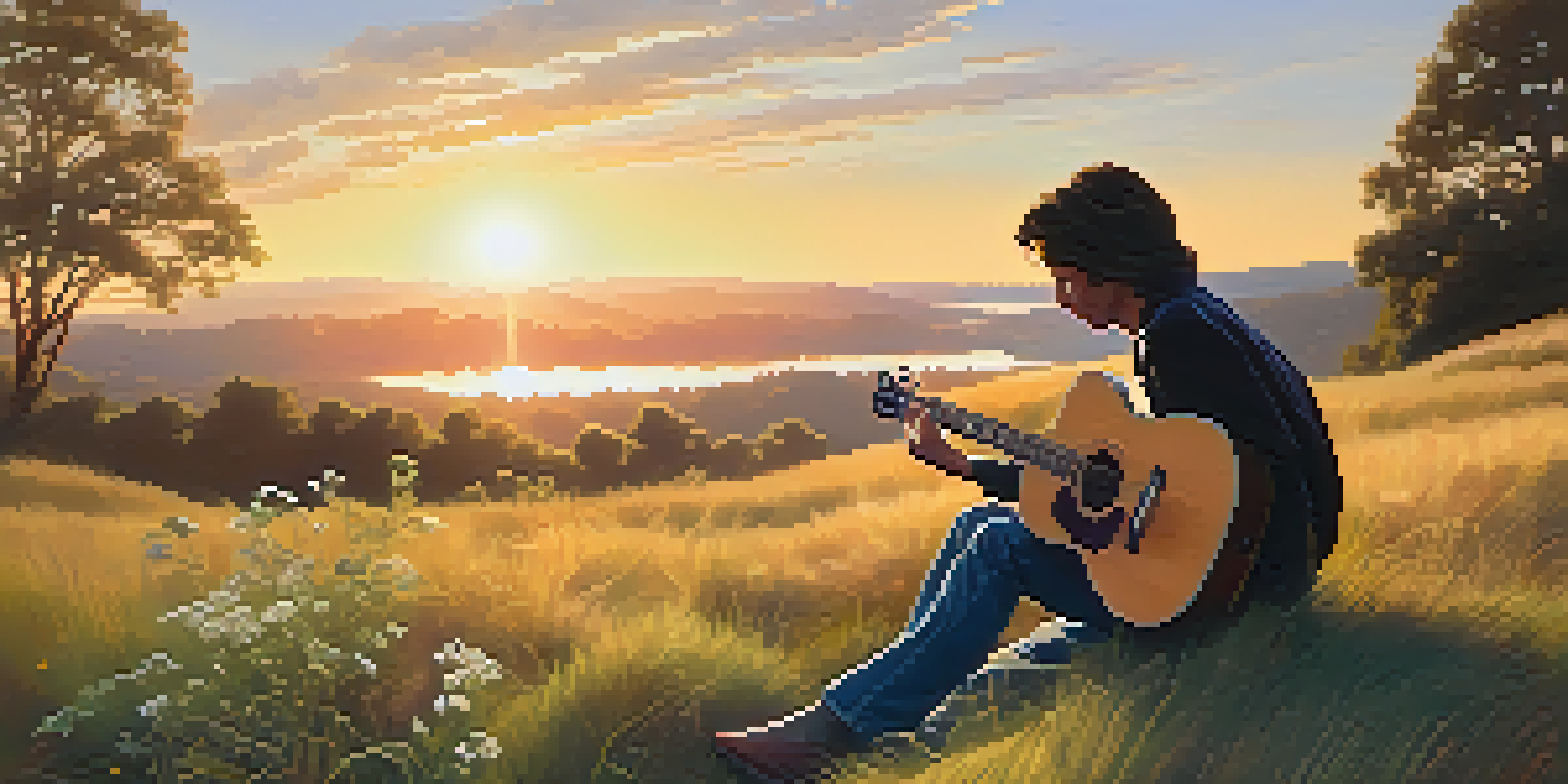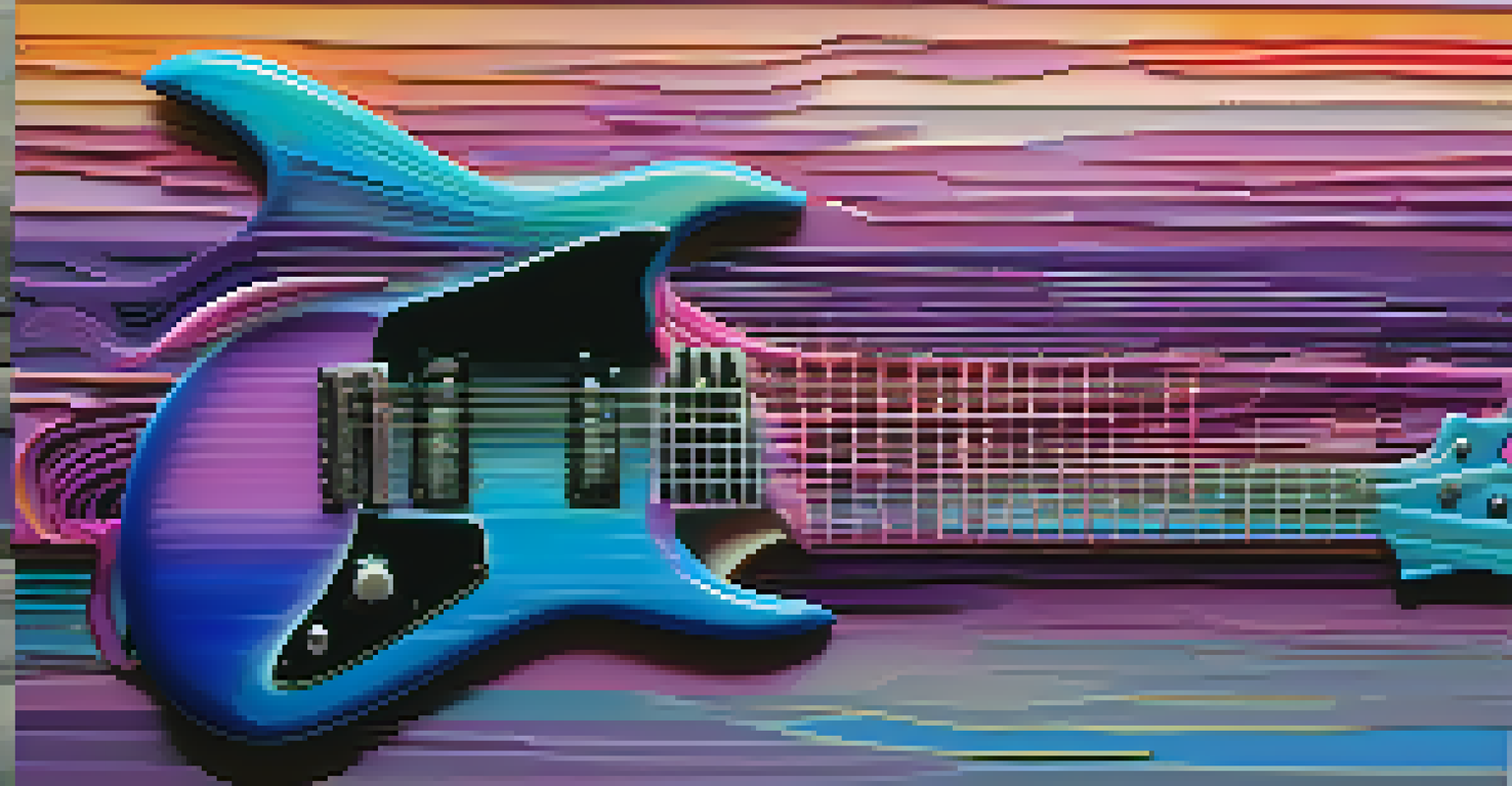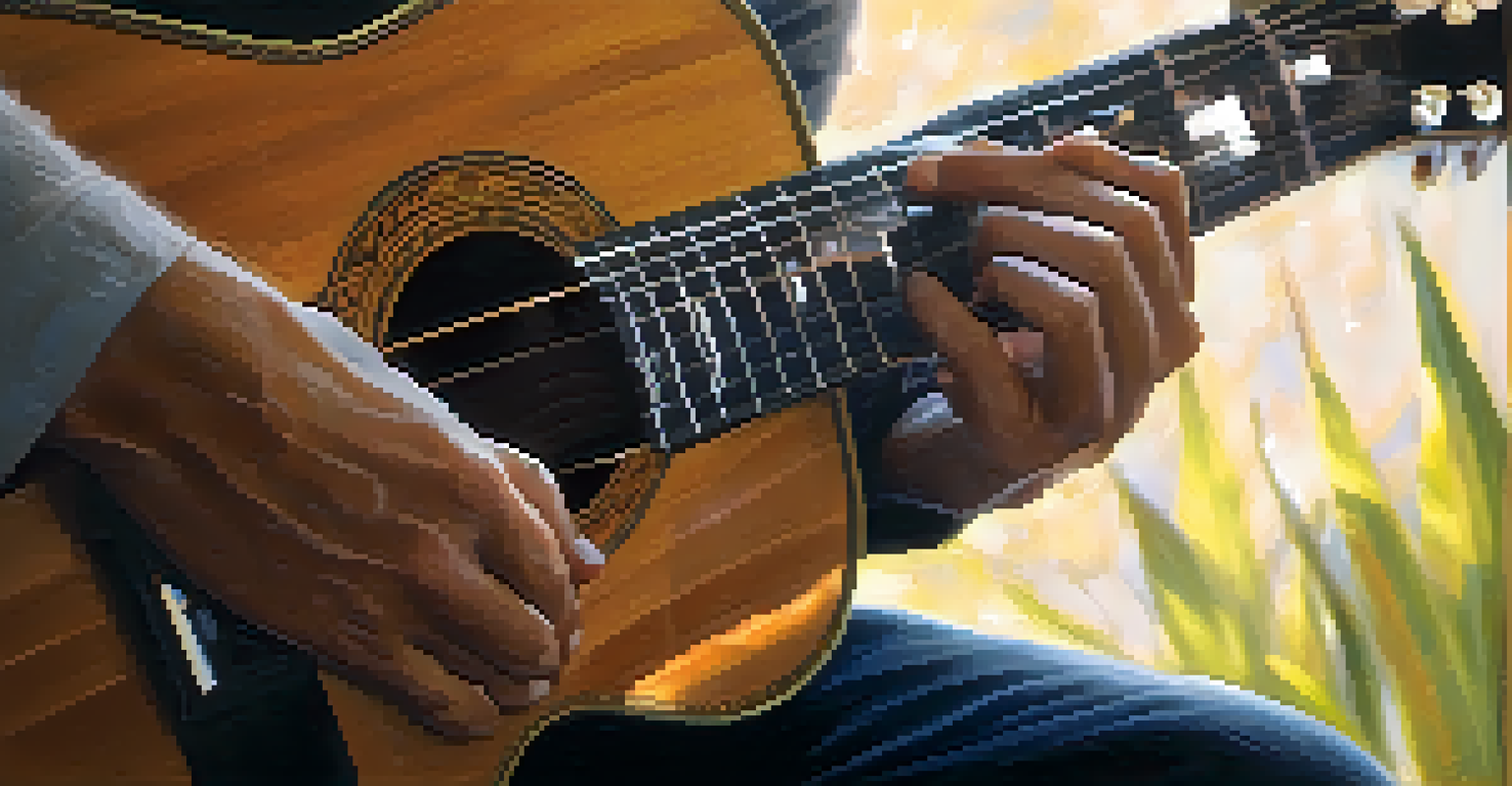Exploring Ambient Guitar Sounds: Techniques and Tips

Understanding Ambient Guitar: A Sonic Journey
Ambient guitar is more than just a genre; it's a sonic landscape that evokes emotion and atmosphere. By blending various effects and techniques, guitarists can create sounds that transport listeners to different realms. This style often focuses on texture and mood rather than traditional melody and rhythm, making it unique and captivating.
Music is the shorthand of emotion.
Think of ambient guitar like painting with sound. Just as a painter uses colors to evoke feelings, a guitarist uses effects like reverb and delay to shape the auditory experience. This approach invites you to explore the subtleties of tone and resonance, allowing for a deeper connection with the music.
As you delve into ambient guitar, consider how each note interacts with the others. The beauty lies in the layers and the space between sounds, creating an immersive experience. Understanding this concept will help you harness the full potential of your instrument and craft your distinctive ambient sound.
Essential Gear for Ambient Guitar Exploration
To create those lush ambient sounds, the right gear is crucial. While any guitar can work, electric guitars often deliver a more expressive tone when paired with effects pedals. Additionally, a good amplifier can enhance your sound, allowing for rich harmonics and depth.

Effects pedals are your best friends in the ambient realm. Reverb, delay, and modulation pedals can transform simple chords into ethereal soundscapes. For instance, combining a long delay with a soft reverb can produce a cascading effect that fills the sonic space beautifully.
Crafting Atmosphere with Effects
Utilizing effects like reverb and delay allows guitarists to create immersive soundscapes that evoke emotion and depth.
Don't forget about the importance of a quality pickup system, especially if you're using an acoustic guitar. A good pickup ensures that the nuances of your playing are captured, allowing your ambient textures to shine through. Investing in the right equipment can make all the difference in your ambient guitar journey.
Creating Atmosphere with Reverb Techniques
Reverb is one of the most powerful tools in an ambient guitarist's arsenal. It mimics the natural echo of sound, giving the impression of space and depth. By adjusting the decay and mix levels, you can create everything from a small room ambiance to a vast, cavernous echo.
The beauty of music is that it connects people. It carries a message, and we, as musicians, are the messengers.
Experimenting with different reverb types can yield unique results. For instance, a plate reverb adds brightness and clarity, while hall reverb creates a lush, expansive sound. Layering different types of reverb can also help build complex textures that envelop the listener.
As you practice, consider how reverb interacts with your playing style. Sometimes, less is more; a subtle reverb can enhance a simple chord progression without overwhelming it. Finding the right balance will allow you to maintain clarity while still achieving that dreamy ambiance.
Mastering Delay to Enhance Your Ambient Sound
Delay is another essential effect for crafting ambient sounds. It creates echoes of your notes, allowing them to linger and interact in fascinating ways. By adjusting the delay time and feedback settings, you can control how these echoes resonate within your composition.
Think of delay as a way to add layers to your music. For instance, a short delay can create a rhythmic pulse, while a longer delay can create a sweeping, atmospheric effect. By experimenting with different settings, you can discover how delay can transform your melodies into immersive soundscapes.
Exploring Harmonics and Drones
Incorporating harmonics and drones enhances the texture of ambient music, creating a meditative and captivating experience.
Combining delay with reverb can amplify the ambient experience. The echoes created by the delay can bounce off the reverb's spaciousness, creating a rich tapestry of sound. This interplay between effects is what makes ambient guitar truly enchanting.
Exploring Harmonics and Drones in Ambient Music
Harmonics and drones are fundamental elements in creating ambient music. Harmonics add a shimmering quality to your sound, while drones provide a steady foundation. Together, they can create a meditative atmosphere that captivates the listener.
To incorporate harmonics, try gently touching the strings at certain points while picking. This technique produces a bell-like tone that can enhance the overall texture of your piece. Drones, on the other hand, can be achieved by sustaining a single note or chord, allowing it to resonate and evolve.
Combining these elements with effects like reverb and delay can amplify their impact. A sustained drone with harmonics floating above can transport listeners to a tranquil place. This exploration not only enriches your sound but also invites listeners to immerse themselves in the experience.
Utilizing Ambient Guitar Techniques in Composition
When composing with ambient guitar, let your imagination guide you. Start with a simple chord progression, then layer effects and textures to build complexity. The key is to focus on creating an atmosphere rather than adhering to traditional song structures.
Consider using techniques like fingerpicking or slide guitar to add a personal touch to your sound. These playing styles can evoke different emotions and enhance the overall vibe of your composition. Don't be afraid to experiment and find what resonates with you.
Finding Inspiration in Nature
Drawing inspiration from nature and everyday life can lead to unique compositions that blend natural sounds with ambient guitar.
As you develop your compositions, remember to leave space for silence. In ambient music, pauses can be just as powerful as the sounds themselves. Embracing silence allows the listener to reflect and absorb the atmosphere you've created.
Finding Inspiration in Nature and Everyday Life
Nature is a rich source of inspiration for ambient guitarists. The sounds of wind, water, and wildlife can evoke powerful emotions, often translating beautifully into music. Consider taking your guitar outside and playing in natural settings to capture that essence.
Everyday life can also spark creativity. Sounds from bustling cities, quiet parks, or even the hum of your home can inspire unique guitar compositions. By paying attention to your surroundings, you can discover new ideas and textures to incorporate into your ambient music.

Recording these sounds and layering them with your guitar can create a fusion of natural and musical environments. This connection between your music and the world around you not only enriches your sound but also invites listeners to experience your unique perspective.
Tips for Practicing Ambient Guitar Techniques Effectively
To effectively practice ambient guitar techniques, set aside dedicated time for exploration. Rather than focusing solely on structured practice, allow yourself to experiment with different sounds and effects. This free-form approach can lead to unexpected discoveries.
Start by recording your sessions. Listening back can help you identify what works and what doesn’t, allowing you to refine your sound. Over time, you'll develop a better understanding of how to layer textures and create captivating atmospheres.
Lastly, don't shy away from collaboration. Working with other musicians can provide fresh insights and inspire new ideas. Whether it's jamming with a friend or collaborating online, sharing your ambient guitar journey can lead to exciting musical growth.